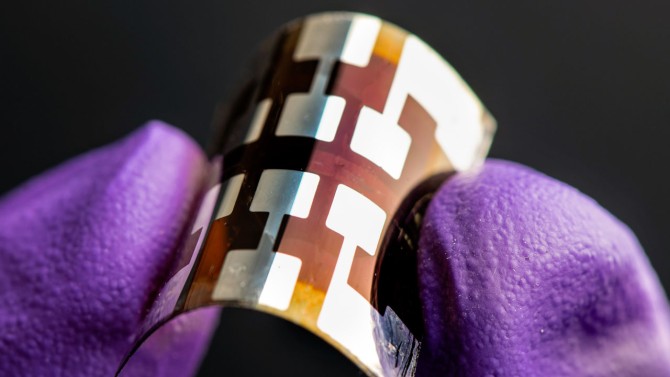2021-06-24 アメリカ合衆国・コーネル大学

・ コーネル大学が、ペロブスカイト太陽電池パネルのリサイクル戦略を発表。
・ 太陽電池の設計ではエネルギー変換効率や安定性等の性能が重要視され、リサイクル設計はおろそかにされることが多い。ペロブスカイト太陽電池は商業化に向けた開発段階にあるが、新しい同材料の適切なリサイクル手法を確立することで、すでに低く設定されるカーボンフットプリントのさらなる低減が可能に。
・ 同大学は昨年、全ペロブスカイト構造を含んだ光起電ウェハーの性能がシリコン太陽電池を上回り、ペロブスカイト-シリコンのタンデム電池では特に性能が優れていることを発見している。
・ ペロブスカイト太陽電池の製造プロセスで消費するエネルギーはより少ないため、ペロブスカイトウェハーではシリコン太陽電池パネルに比べて初期エネルギー投資の回収が早くなる。
・ ペロブスカイト太陽電池のリサイクルにより、一次エネルギー消費量の 72.6%の低減およびカーボンフットプリントの 71.2%の削減が可能となり、太陽電池の持続可能性が向上する。太陽電池製造に必要なエネルギー量の低減は、エネルギー・ペイバック・タイム(EPT)と温室効果ガス排出量の大幅な削減につながる。
・ 最も優れたモジュール構成のリサイクルでは、EPT が約 1 ヶ月、カーボンフットプリントは 13.4gCO2eq/kWh を見込む。リサイクル無しのケースでは、ライフサイクルを通じて EPT が 30~70 日、カーボンフットプリントが 27.5~158.0g-CO2eq/kWh となる。
・ 現在市場をリードしているシリコン太陽電池では、EPT は 1.3~2.4 年 初期カーボンフットプリントは22.1~38.1g-CO2eq/kWh となり、リサイクルによるペロブスカイト太陽電池の優位性が示される。
・ リサイクルインフラ開発戦略を伴った州・連邦政府政策が、太陽電池製造による環境への影響の低減につながる。環境負荷の少ないペロブスカイト太陽光パネル産業の真の価値は、そのリサイクルプログラムが決定する可能性がある。
URL: https://news.cornell.edu/stories/2021/06/recycling-next-generation-solar-panels-fosters-green-planet
<NEDO海外技術情報より>
(関連情報)
Nature Sustainability 掲載論文(アブストラクトのみ:全文は有料)
Life cycle assessment of recycling strategies for perovskite photovoltaic modules
URL: https://www.nature.com/articles/s41893-021-00737-z
Abstract
Effective recycling of spent perovskite solar modules will further reduce the energy requirements and environmental consequences of their production and deployment, thus facilitating their sustainable development. Here, through ‘cradle-to-grave’ life cycle assessments of a variety of perovskite solar cell architectures, we report that substrates with conducting oxides and energy-intensive heating processes are the largest contributors to primary energy consumption, global warming potential and other types of impact. We therefore focus on these materials and processes when expanding to ‘cradle-to-cradle’ analyses with recycling as the end-of-life scenario. Our results reveal that recycling strategies can lead to a decrease of up to 72.6% in energy payback time and a reduction of 71.2% in greenhouse gas emission factor. The best recycled module architecture can exhibit an extremely small energy payback time of 0.09 years and a greenhouse gas emission factor as low as 13.4 g CO2 equivalent per kWh; it therefore outcompetes all other rivals, including the market-leading silicon at 1.3–2.4 years and 22.1–38.1 g CO2 equivalent per kWh. Finally, we use sensitivity analyses to highlight the importance of prolonging device lifetime and to quantify the effects of uncertainty induced by the still immature manufacturing processes, changing operating conditions and individual differences for each module.



